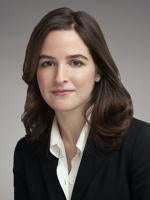On May 2, 2025, the National Science Foundation (“NSF”) issued a “Policy Notice: Implementation of Standard 15% Indirect Cost Rate” (NSF 25-034) (hereinafter “Policy Notice”) adopting a uniform 15% Indirect Cost Rate (“IDC”) for all new NSF grants and cooperative agreements awarded to Institutions of Higher Education (“IHEs”).
The Policy Notice, which became effective May 5, 2025, sets forth a new policy by which NSF will now apply a single, standard IDC “not to exceed 15%” to all future grants and cooperative agreements awarded to IHEs for allowable indirect costs. Currently, IHEs have reported IDCs ranging from 50% to 65%. The Policy Notice allows the awardee organization to “determine the appropriate rate up to this [15%] limit.”
Rationale for the New Policy
Indirect costs, also referred to as “facilities” and “administrative” costs (“F&A”), encompass costs not directly assignable to a specific project or activity but necessary to support the overall research infrastructure of the recipient organization. Historically, awardees seeking to recover indirect costs related to NSF awards have negotiated IDCs on an institution-by-institution basis. These rates were included in Negotiated Indirect Cost Rate Agreements (“NICRAs”), binding upon the institution and the agency, and applied against the Modified Total Direct Costs (“MTDC”) for the project. In contrast to the new uniform 15% rate, NICRAs represent a formally negotiated rate based on an exchange of information with NSF concerning the institution’s general costs and expenditures, including historical cost information, and regularly updated by the institution, often annually.
The Policy Notice asserts that the shift to using a single 15% IDC rate supports NSF’s commitment to efficiency, consistency, and effectiveness, and is designed to enable awardees to “focus more on scientific progress and less on administrative overhead by aligning with common federal benchmarks.” The Policy Notice also emphasizes that the adoption of a single, standard IDC “improves government efficiency by eliminating the need for individualized indirect cost negotiations.”
Regulatory Framework
As a reminder, the National Institutes of Health (“NIH”) issued a similar policy to cap indirect costs for NIH awardees at 15% on February 7, 2025 (“NIH Notice”), which has been permanently stayed per court order in the wake of three consolidated lawsuits challenging the act, though subject to a pending appeal. Shortly after, on April 11, 2025, the Department of Energy (“DOE”) announced an almost identical rate cap of 15% on recovery of indirect rate costs by IHEs awardees, discontinuing the use of negotiated indirect cost rates for DOE grants (“DOE Notice”). The DOE Notice was promptly challenged in federal court and temporarily restrained nationally by a federal judge. Notably and likely in response to the legal challenges to the prior rate capping notices, the NSF Policy Notice includes language supporting NSF’s legal authority for implementing this almost-immediate change.
First, the Policy Notice provides that it “serves as public notification of the policies, procedures and general decision-making criteria that NSF has used to justify deviation from negotiated rates for all awards in accordance with 2 CFR 200.414(c) for the class of NSF financial assistance awarded to IHEs.” Notably, § 200.414(c)(1) requires that all federal agencies accept negotiated indirect cost rates, and that an agency “may use a rate different from the negotiated rate for either a class of Federal awards or a single Federal award only when required by Federal statute or regulation, or when approved by the awarding Federal agency in accordance with paragraph (c)(3).” In turn, § 200.414(c)(3) – the analogue to 45 C.F.R. § 75.414(c)(1) in the Department of Health and Human Services regulations – requires that the agency “must implement, and make publicly available, the policies, procedures and general decision-making criteria that their programs will follow to seek and justify deviations from negotiated rates.”
The referenced regulations mirror the regulatory framework relied upon by NIH in the NIH Notice. However, where the NIH Notice was silent as to how it made its decision-making criteria public, including prior to issuance, the NSF Policy Notice leaves no room for doubt given its express statement incorporating the regulatory language, indicating the Notice serves as the required public notification of NSF’s policies, procedures, and criteria justifying deviation from negotiated rates.
Second, the Policy Notice makes clear that it takes “precedence over inconsistent policies and procedures set forth in the NSF Proposal & Award Policies & Procedures Guide [(“PAPPG”)] for all financial assistance issued after the effective date,” thus attempting to preempt legal challenges relying on the negotiated rate procedures set forth in the PAPPG.
Impact on Current and Pending NSF Grants
The Policy Notice explicitly states the new 15% rate will not apply retroactively to awards issued prior to the effective date. Further, award supplements and continuing grant increments made or awarded under an original grant in existence on or before the May 5, 2025, effective date are not subject to the new policy. Similarly, IHEs are not required to revise budgets for awards issued before May 5, 2025, or repay reimbursed indirect costs.
However, NSF awardees should still be aware of other avenues through which the federal government may alter, and even reduce, their IDCs on existing grants. Specifically, as set forth on NSF’s website, the United States Office of Management and Budget (“OMB”) has authorized all federal agencies to, at their discretion, renegotiate existing NICRAs (i.e., issue amended agreements presumably with new rates), “to reflect the new MTDC base.” NSF has publicly announced it will consider modification requests on a case-by-case basis.
Note that on its face, the new NSF IDC rate does not apply to non-IHEs but given the widespread partnership between institutes of higher education and academic medical centers/research institutions, there may be broad downstream impacts on planned research partnerships across the academic research community.
Recent Legal Challenges to the NSF Policy Notice
On May 6, 2025, the NSF Policy Notice was challenged in a lawsuit filed by the Association of American Universities (“AAU”) along with American Council on Education (“ACE”), Association of Public and Land-Grant Universities (“APLU”), Brown University, California Institute of Technology, University of California, Carnegie Mellon University, University of Chicago, University of Illinois, Massachusetts Institute of Technology, University of Michigan, University of Minnesota, University of Pennsylvania, Princeton University, AAU, et. al. v. National Science Foundation, Case #1:25-cv-11231, alleging NSF’s 15% rate cap on IDCs is unlawful because the change, among other things, violated NSF’s governing statutes, Office of Management and Budget (“OMB”) regulations, and, notably, the Administrative Procedure Act (“APA”), which has served as the basis for several pending lawsuits challenging unilateral IDC rate cuts and other administrative actions taken by NIH under the new federal administration. Specifically, the complaint alleges (1) the indirect rate change is arbitrary and capricious, (2) the rate change violates NSF’s authorizing statutes by supplanting the individually negotiated rates with a one-size-fits-all cap, and (3) NSF failed to comply with applicable OMB regulations for recovery of indirect cost rates. Plaintiffs filed a combined motion for preliminary injunction and request for expedited summary judgment based on their view that the matter can be decided on an expedited basis on the existing record. Plaintiffs have asked the court to declare the Rate Cap Policy illegal and to enter a preliminary and permanent injunction against NSF, prohibiting NSF and anyone acting on NSF’s behalf from applying the 15% rate cap in any form or otherwise modifying the existing negotiated indirect costs rates except as permitted by statute and regulation.
EBG will continue to follow developments in NSF’s IDC policy, including any updates to NSF’s grant policy documents, FAQs, or other guidance.









 />i
/>i
